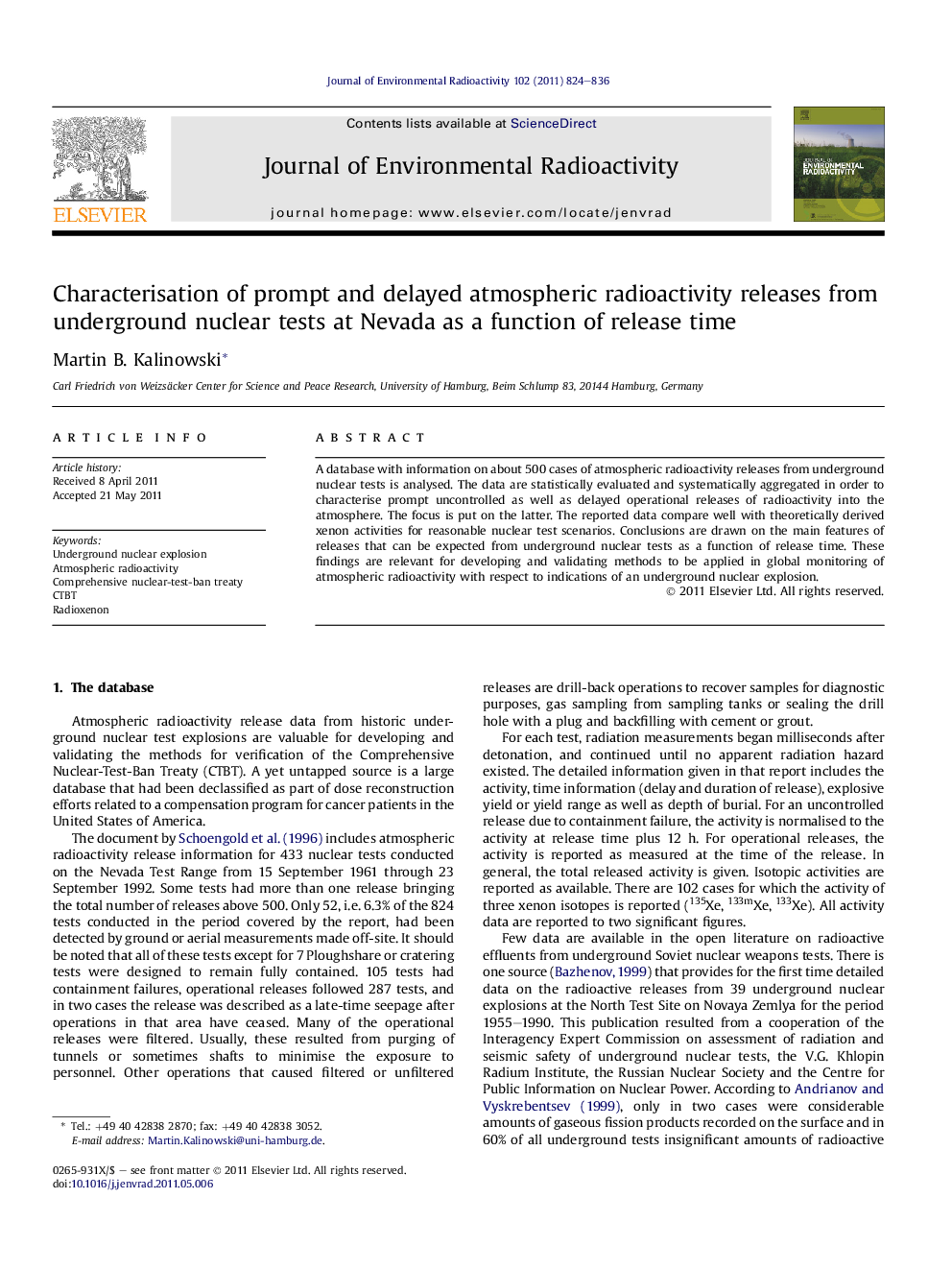| Article ID | Journal | Published Year | Pages | File Type |
|---|---|---|---|---|
| 1738587 | Journal of Environmental Radioactivity | 2011 | 13 Pages |
A database with information on about 500 cases of atmospheric radioactivity releases from underground nuclear tests is analysed. The data are statistically evaluated and systematically aggregated in order to characterise prompt uncontrolled as well as delayed operational releases of radioactivity into the atmosphere. The focus is put on the latter. The reported data compare well with theoretically derived xenon activities for reasonable nuclear test scenarios. Conclusions are drawn on the main features of releases that can be expected from underground nuclear tests as a function of release time. These findings are relevant for developing and validating methods to be applied in global monitoring of atmospheric radioactivity with respect to indications of an underground nuclear explosion.
► 105 uncontrolled and 287 operational releases from underground tests at Nevada. ► Isotopic ratios consistent with full in-growth from the precursors with no fractionation. ► Isotopic ratios are a reliable parameter to facilitate source discrimination. ► There may be a significant delay and duration for releases. ► This has to be taken into account for fusion with seismoacoustic signals in CTBT verification.
